Homemade Chicken Dust Bath
This Homemade Chicken Dust Bath guide will give you another tool that you can use to continue setting up a coop that your hens love. Having a dust bath is a great addition and filling it with the best ingredients is even better.
Raising chickens that are happy and healthy all starts with a chicken coop they thrive in. Add a dust bath to your chicken coop and see the benefits of a healthier flock.
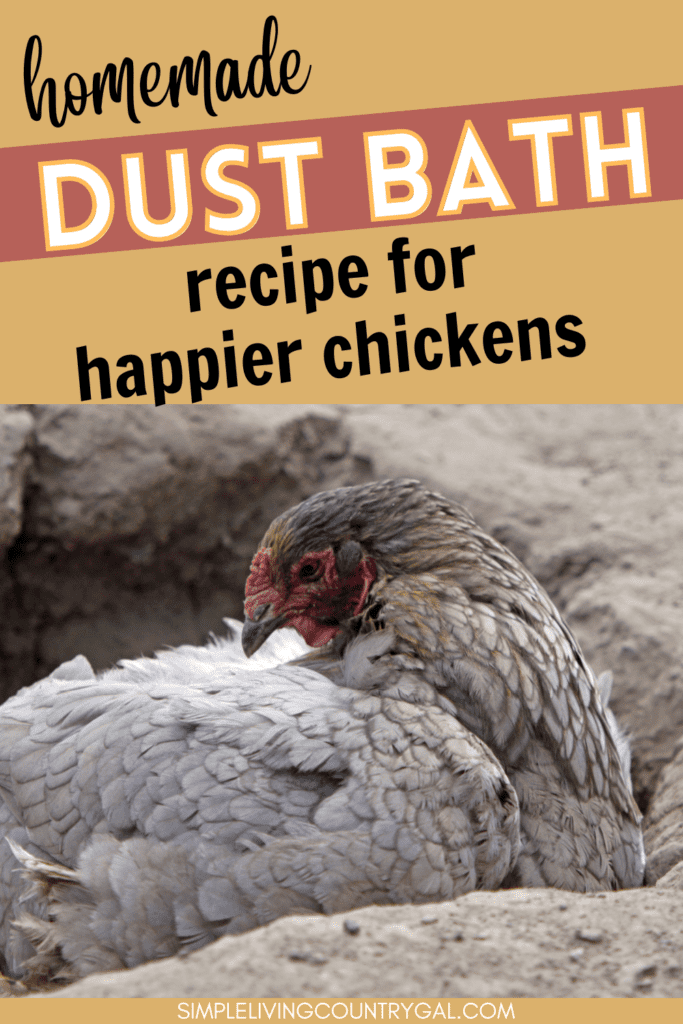
If you’re planning on raising chickens, a dust bath is a necessity. It may seem strange, but chickens get clean by getting dirty. They don’t take a traditional bath; instead, they clean themselves by flapping and rolling around in the dirt. A dust bath helps them to shed loose feathers, exfoliate their skin, and, most importantly, smother any parasites or insects that may be living on them.
There are several parasites that can put your chicken’s health at risk, including mites and lice. Parasites can lead to illness, malnutrition, and even cause death. Providing a dust bath for your chickens can help keep them healthy. And healthy chickens mean lots and lots of delicious eggs.
While taking a dust bath, chickens will get as much dirt on them as possible and work it all the way down to the base of their feathers. This will not only clean them; it will also serve to smother any pests that may be on them.
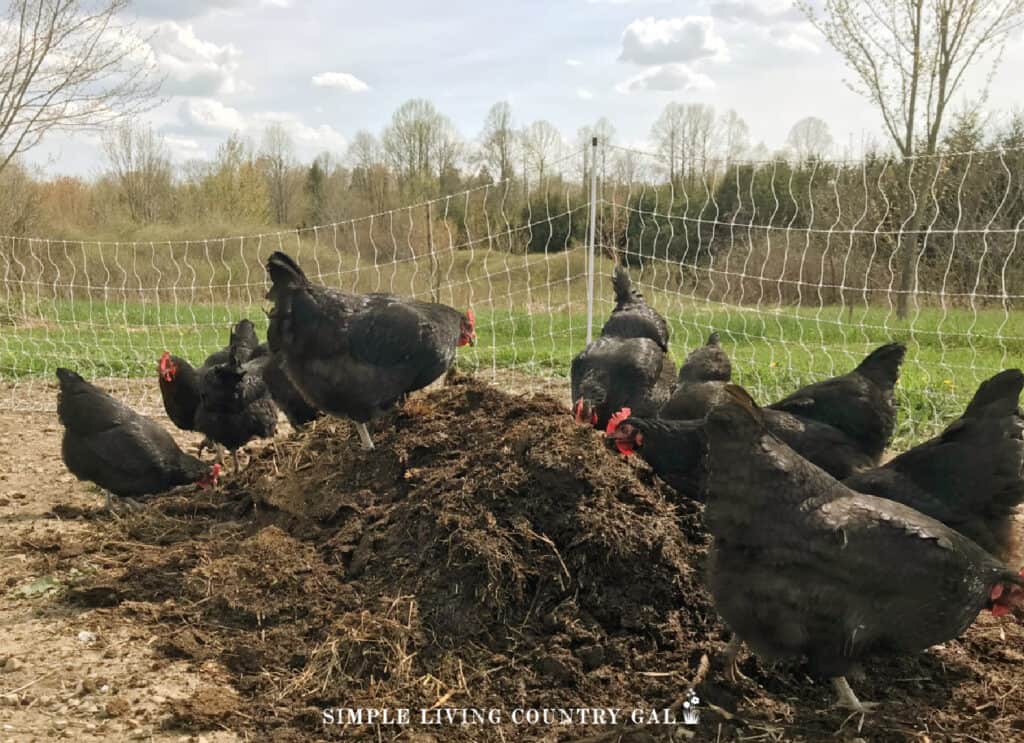
Chickens are community creatures and like to bathe together. Once one chicken starts, the others are soon to follow. It’s not only a good way to keep clean, but it’s also a good social activity for them. You’ll want to make sure your dust bath can hold at least a few chickens at a time.
How do chickens take a dust bath?
After settling down in the dirt and creating a spot that’s just big enough for their body, they’ll wiggle and flap their wings to ensure they are completely covered in it. They will then start preening their feathers with their beak to remove any excess and get rid of any parasites.
Finally, they’ll smooth oil secreted from a gland at the base of their tail over their feathers and remove any old, loose ones.
Chickens are instinctively drawn to dust baths, so if you don’t provide them one, they’ll figure out how to make one on their own with any loose soil they find, including what they may find in your garden. Providing a dust bath not only keeps them healthy, but it can also help keep your garden or yard intact.
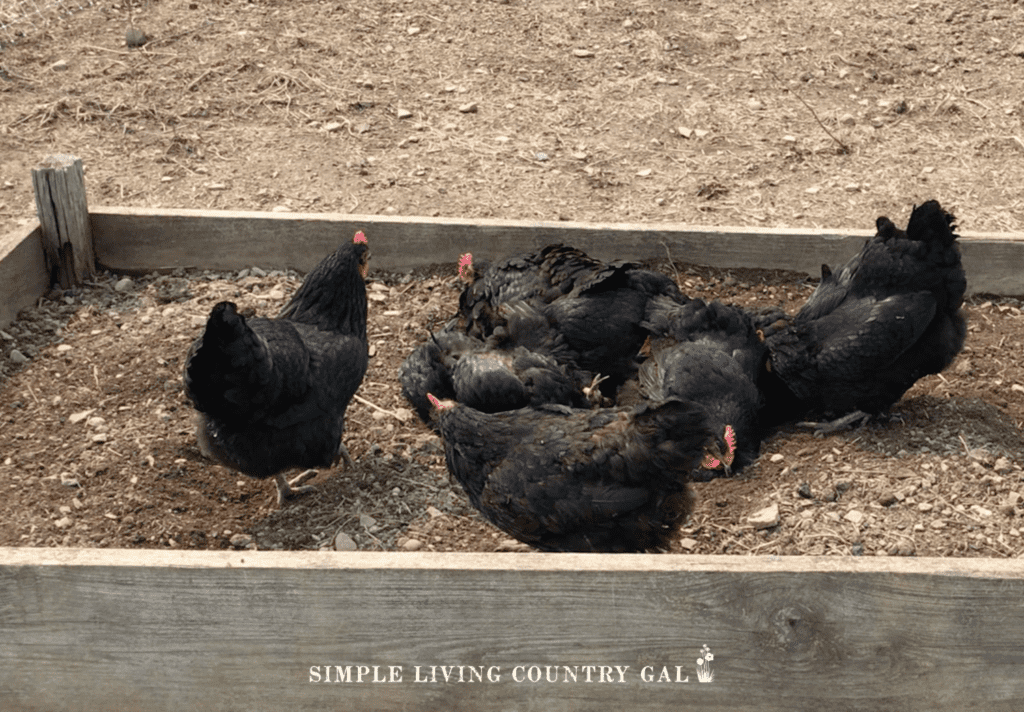
There aren’t any definitive rules about making a dust bath, there are many ways to do it, and you can use a variety of supplies, even some you may already have on hand.
How to Make a Homemade Chicken Dust Bath
Let’s break things down and cover each component to help finding what you need more easily.
Choose a Container
The first thing you need is a container for your dust bath. Choose something low enough that the chickens can easily climb in and out of it but tall enough that it will keep the dust bath materials contained.
Some container ideas might include a shallow bin, a sandbox, a kiddie pool, or old tires. You can also build a shallow container with some boards in your shed.
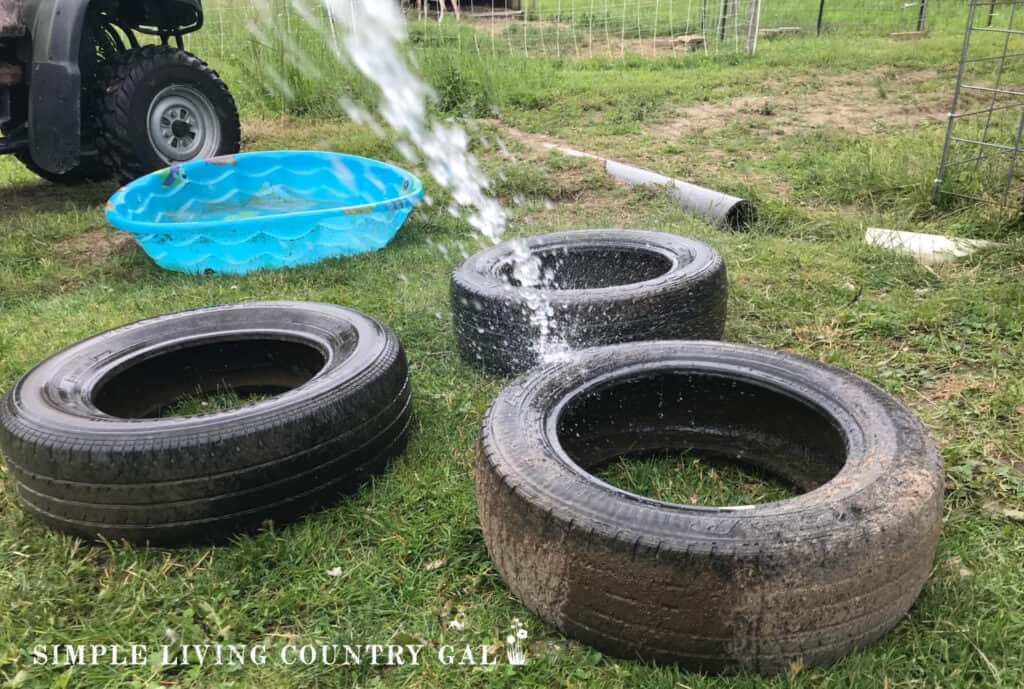
Add Soil
A dust bath needs dirt, but it doesn’t need to be anything special. What you have on hand will do. Loose soil from your garden is a good option as long as it doesn’t contain clay. You can also purchase a bag of peat moss or topsoil. You’ll just want to make sure the soil is loose, not clumpy, and doesn’t contain clay.
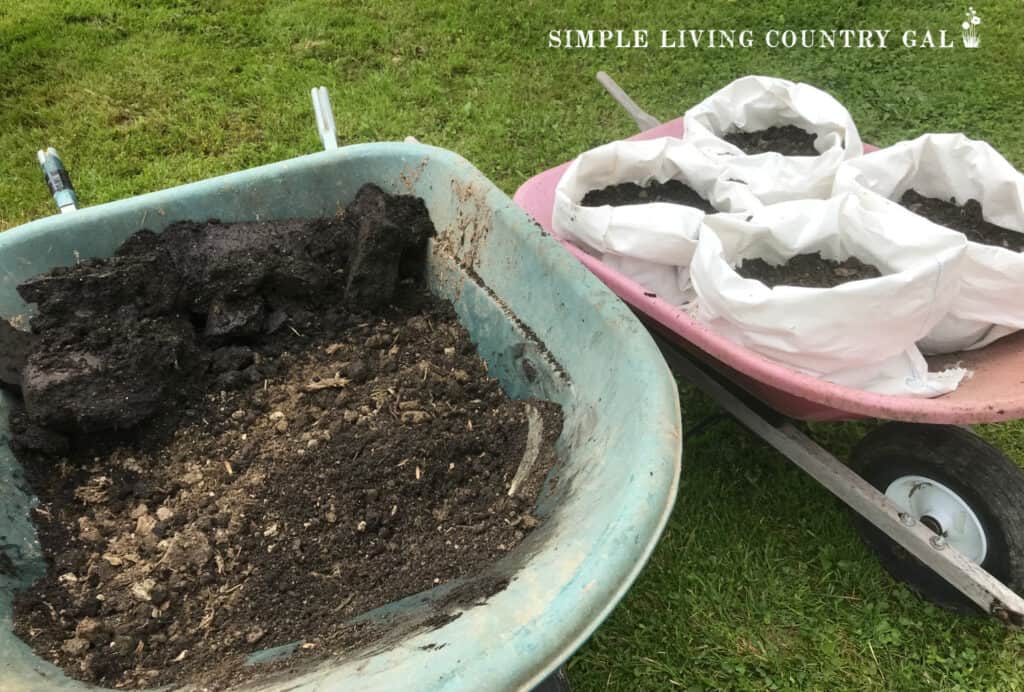
Add Other Ingredients
You’ll want to add some kind of loose, powdery substance to mix into the dirt. The additives will help your chickens remove parasites and insects.
A few good choices include:
· Wood ash – Be sure it is not from pressure-treated wood
· Diatomaceous earth – Be sure it is food grade.
· Sand
· Sulfur dust
Wood ash can come from your fireplace, wood-burning stove, or outdoor fire pit; just ensure it’s dry and cool before adding it in. Wet ash won’t help your chickens in a dust bath. You need all the ingredients to remain dry at all times.
Wood ash doesn’t need to be filtered; small chunks of charcoal are fine. Chickens might nibble on it, but it won’t hurt them.
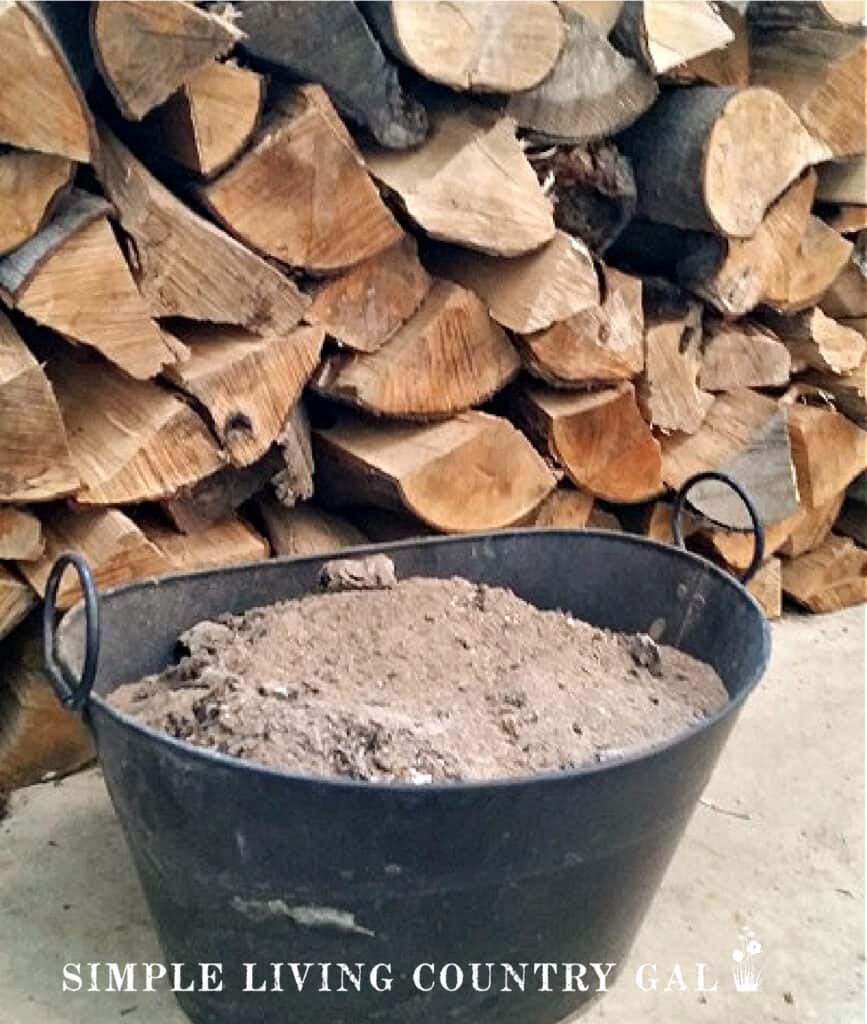
Sulfur dust is an excellent option; it’s been found to help eliminates mites and lice on chickens. In fact, it continues to work even after the dust bath. Studies have shown that a sand and sulfur dust bath helped to eliminate pests for 2-4 weeks after the bath was removed.
Hanging bags of sulfur dust in areas where chickens can bump into them, like near their food and water, can also help to eliminate pests.
Add Dried Herbs
This step isn’t necessary, but it can help your chickens keep insects and parasites away, and it can also keep your chickens smelling nice. If they nibble on the herbs while they’re bathing, it will help to improve their health.
Some good herbs to add to the bath include:
- Oregano
- Lavander
- Mint
- Basil
- Marjoram
- Sage
- Bay Leaves
- Catnip
- Cinnamon
- Ginger
- Patchouli
- Tarragon
Please make sure the herbs are dried, or pick them fresh from your garden and dry them before adding them to the dust bath.
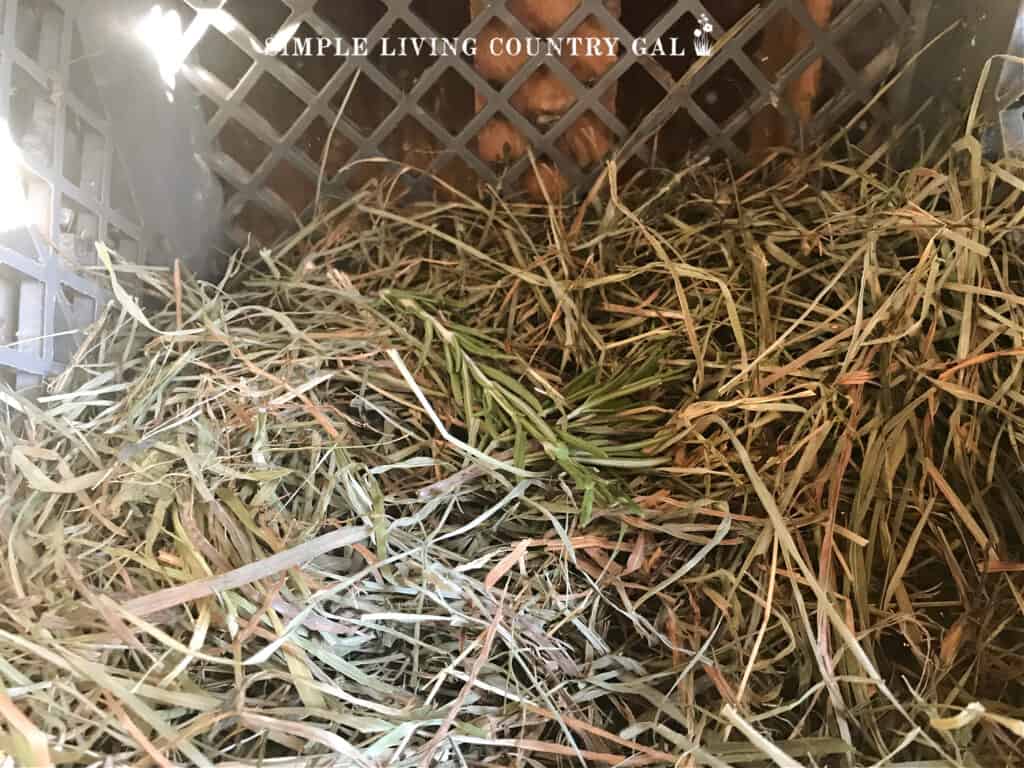
You can also add some edible weeds that your chickens might like.
Edible weeds you can add:
- Nettles
- Bee Balm
- Clover
- Wood Sorrel
- Dandelion
- Chickweed
Be sure to avoid using anything that might be poisonous to your chickens though.
Things to avoid using with your chickens:
- Foxglove
- English Ivy
- Buttercup
- Daffodils
- Azalea
- Fern
- Creeping Myrtle
Mix and Prep
Once your dust bath components are gathered up, thoroughly mix all of the ingredients together. To avoid breathing any dust in, you will want to use a face mask or other face covering.
Location
Keep your dust bath somewhere undercover where your chickens can enjoy it at their leisure while keeping it dry at the same time. A muddy bath won’t do much to help your chickens stay clean and free of parasites.
You can keep your dust bath inside of the coop or outside in the run under an overhang or other covering. If neither of these options is available, you can put a cover over the bath and remove it on sunny days so your chickens can utilize it.
Every few months, refresh the dust bath with fresh soil, ash, sand, and any other ingredients you’re adding. It will become depleted over time. Before topping it off, shovel out any old soil that shows signs of insects or parasites, or empty the dust bath out completely and start fresh.
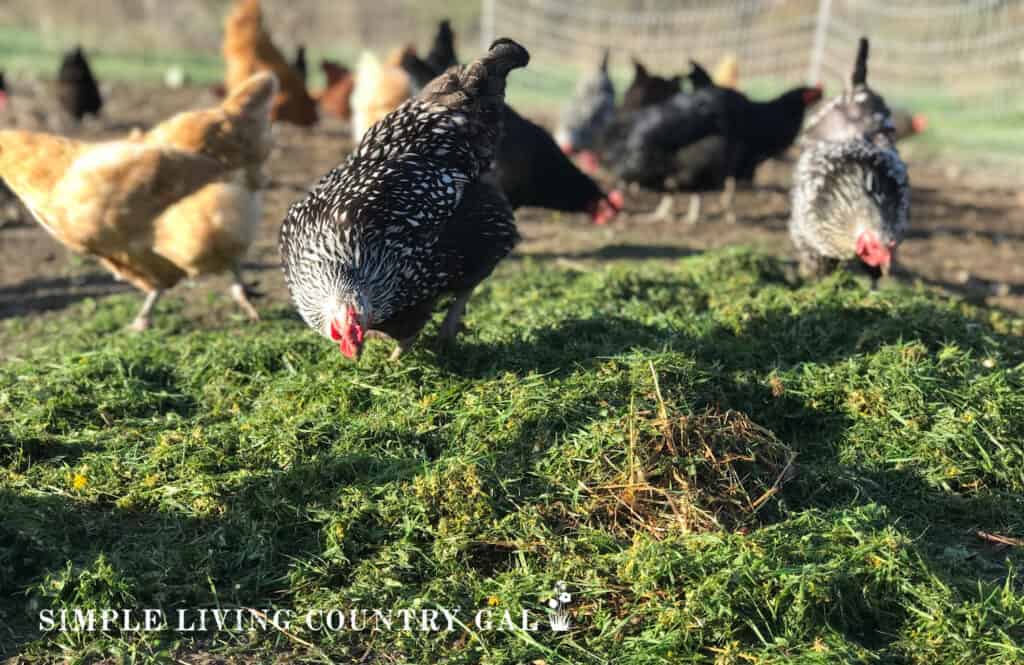
Providing a dust bath for your chickens, whether they’re free-range or in a chicken run, will help to keep them both happy and healthy. And it will help to keep them out of your garden. Adding a few healthy dried herbs to the dust bath will provide extra nutrition for them as they’ll nibble.
A homemade chicken dust bath is easy to make, necessary for raising chickens that are healthy and happy, and can usually be made with items you already have in your shed.
